Prefer to listen in? Play the audio here:
In our previous article, "Mid-Year Financial Check-Up: 6 Tips to Stay on Track," we emphasized the importance of evaluating your financial plan and investments to ensure they align with your current circumstances and goals. Equally crucial is assessing your tax situation at this juncture. By taking a proactive approach to tax planning, you can uncover opportunities to reduce your tax liability, optimize your retirement contributions, and improve your overall financial health. This 8-step guide delves into essential strategies and considerations to help you make the most of your mid-year tax planning efforts effectively.
Review Your Current Tax Situation — Thinking ahead can help reduce taxes by allowing you time to implement wise strategies for the remaining year. The first step is to evaluate your income, deductions, and potential tax liabilities. Identify any major life changes such as marriage, divorce, or a significant increase or decrease in income that may impact your tax position. By assessing your financial circumstances, you can pinpoint opportunities to optimize your personal tax strategy. For example, a decrease in income may make you eligible for certain deductions or credits, while an increase in income may require adjustments to avoid penalties. Seeking guidance from a tax professional or your financial advisor can provide further insights and expertise to optimize your personal tax planning approach.
Maximize Your Retirement Contributions — In 2024, the maximum amount of pretax money you can save in most workplace retirement accounts is $23,000, up from $22,500 in 2023. The cap on annual IRA contributions has increased to $7,000, up from $6,500.
If you're 50 or older, take advantage of catch-up contributions. For example, in most workplace retirement plans, you can save an extra $7,500 in 2024 beyond the normal $23,000 cap, the same as in 2023. These contributions may be tax-deductible or grow tax-free, providing you with immediate or long-term tax advantages. Cost-of-living changes to these catch-up contributions do not apply to IRAs, however. There, the extra savings for the 50-and-up group remain at $1,000.
New legislation from late 2023 allows some people to roll over up to $35,000 from a 529 savings plan to a Roth IRA. Starting in 2024, leftover money from a 529 plan can be moved to the account beneficiary’s Roth IRA. There are limits, including existing Roth contribution restrictions. Moreover, the 529 account in question must be at least 15 years old, and you can’t roll over money that you deposited (or earnings from those deposits) from the previous five years.
Optimize Your Investment Portfolio — When it comes to investing, it's not just about how much you make, it's also about how much you get to keep after taxes. The amount you lose to taxes can have a big impact on your overall returns, alongside things like choosing the right investments and balancing your assets. Even small losses can add up over time, so finding ways to minimize these setbacks can really pay off. Consider meeting with your financial advisor for a mid-year review. With proper planning, you can make your investment portfolio more tax-efficient and hold on to a bigger chunk of your hard-earned returns.
Implement Charitable Giving Strategies — Charitable giving presents an opportunity to reduce your tax burden while supporting causes you care about. One strategy is to donate appreciated securities from your taxable accounts to the charitable organization of your choice. By doing this, you can claim a deduction for the full fair market value of the securities and avoid paying any capital gains tax. It's a win-win situation: you support a cause you care about while also maximizing your tax benefits.
Another strategy for charitable giving that can help reduce your tax burden is establishing a donor-advised fund (DAF). A DAF allows you to make a charitable contribution and receive an immediate tax deduction for the full amount donated, even if the funds are distributed to charitable organizations over time. With a DAF, you can contribute a lump sum or ongoing donations to the fund and then recommend grants to your chosen charities at a later date. This provides flexibility in timing your charitable giving while still taking advantage of the tax benefits upfront.
Review Estate and Gift Planning — Estate and gift planning are crucial aspects of any financial plan. If you plan on leaving appreciated securities to your heirs, upon your passing, your heirs will receive a step-up in the cost basis of the securities. This means that the value of the securities will be adjusted to their fair market value at the time of your death. As a result, if your heirs decide to sell the inherited securities, they will only be liable for capital gains tax on any price appreciation that occurs after they inherit them. This step-up in cost basis can lead to significant tax savings for your beneficiaries.
In addition, if you have a Roth IRA, it can serve as a wonderful asset to leave as an inheritance. While Roth IRA distributions are generally tax-free for the account owner during their lifetime, it's important to note that the tax treatment for beneficiaries may differ. Non-spouse beneficiaries, for example, typically need to take required minimum distributions (RMDs) from the inherited Roth IRA, but these distributions are generally tax-free. On the other hand, spouse beneficiaries have the option to treat the inherited Roth IRA as their own, allowing them to continue enjoying tax-free growth and withdrawals. Considering the potential tax advantages, a Roth IRA can be a valuable legacy to pass on, providing your loved ones with a source of tax-free income. However, it's crucial to seek guidance from a financial advisor or estate planning professional to better understand the specific rules and tailor your approach to your unique circumstances.
Consider Tax-Efficient Withdrawal Strategies — If you’re already in retirement, how you withdraw funds from various accounts can significantly impact your tax liability. By strategically planning your withdrawals, you can minimize taxes and optimize your retirement income. Evaluate options such as Roth conversions, which involve converting traditional IRA funds into Roth IRAs to potentially enjoy tax-free withdrawals in the future. It's important to note that the decision to undertake Roth conversions should be based on various factors, including your current tax bracket, future tax expectations, and individual financial goals. Our team can help you assess your specific situation and provide personalized guidance on whether Roth conversions align with your retirement and tax planning objectives.
Stay Up to Speed with Tax Law Changes — Keeping up with the latest updates is essential when it comes to smart tax planning. Here's an interesting tidbit: did you know that starting in 2024, you can claim $1,200 each year for certain energy-efficient improvements around the house such as replacing exterior doors, windows, or insulation materials? There is an additional credit worth up to $2,000 annually for various new water heaters and heat pumps. Together, the credits are worth up to $3,200 for each year through 2032. In addition, the residential clean energy property credit, which covers home improvements like solar panels, has been extended to 2034. Plus, from 2022 to 2032, you can get a 30% credit on qualified costs. Talk about motivation for your next home improvement project! Stay in the know and make the most of these incredible opportunities.
Leverage Professional Advice — Navigating the complexities of mid-year tax planning requires expertise and experience. Connect with your financial planner and/or your tax professional. They can provide personalized advice, evaluate your specific circumstances, and develop tailored strategies to optimize your tax situation. By proactively engaging in mid-year tax planning, you can take control of your financial future and potentially save a significant amount when tax season comes around again. Remember, effective tax planning goes hand in hand with comprehensive financial planning, so it's essential to consider your broader financial goals alongside tax optimization.
Please note that this article provides general information and should not be considered as individualized financial or tax advice. Contact Aspire Planning Associates at (925) 938-2023 and take the first step today to prepare your finances for a brighter, more tax-efficient future!



